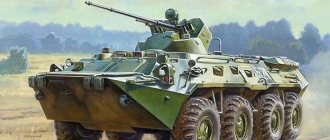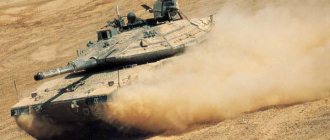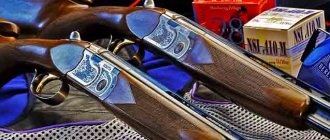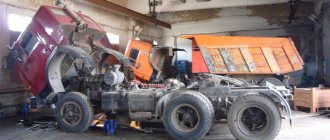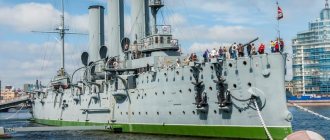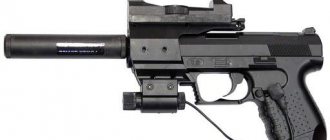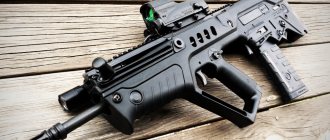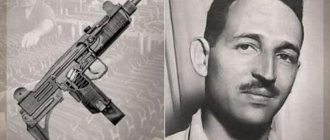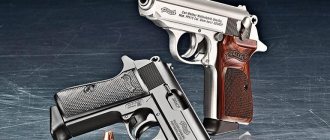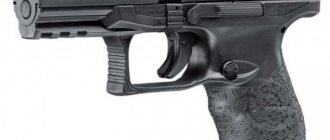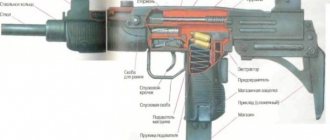Type half-track armored personnel carrier
| Sd.Kfz. 250 | |
| Sd.Kfz. 250/2 | |
| Type | Half-track armored personnel carrier |
| Place of origin | Nazi Germany |
| Service history | |
| In service | 1941–1945 |
| Used | Nazi Germany Kingdom of Romania |
| Wars | The Second World War |
| Production history | |
| Designer | Demag |
| Developed | 1939–1940 |
| Manufacturer | Demag, Adlerwerke, Büssing-NAG, MWC |
| Unit cost | 20420 Reichmark |
| Produced | 1941–1945 |
| No built | Approx. 6,628 |
| Options | see list below |
| Technical characteristics (Sd.Kfz. 250/1 Ausf. A) | |
| Weight | Load: 5,800 kg (12,800 lb) |
| Length | 4.56 m (15 ft 0 in) |
| Width | 1.945 m (6 ft 5 in) |
| Height | 1.66 m (5 ft 5 in) |
| Crew | 2 + 4 |
| Armor | 5.5 - 14.5 mm (0.22 - 0.57 in) |
| Main weapons | 1 or 2 7.92 mm (0.312 in) MG 34 machine guns |
| Engine | Maybach HL42 TRKM, 6-cylinder water-cooled petrol engine, 100 hp. (99 hp, 74 kW) |
| Power/weight | 17.2 hp / T |
| Transmission of infection | 7 + 3 speed Maybach VG 102128 H |
| Suspense | Torsion bar cover (track) leaf springs (wheels) |
| Ground clearance | 28.5 cm (10 inches) |
| Fuel tank capacity | 140 L (37 US gal) |
| Operating range | Road: 300–320 km (190–200 mi) Rough: 180–200 km (110–120 mi) |
| Maximum speed | Road: 76 km/h (47 mph) |
Sd.Kfz. 250
(German:
Sonderkraftfahrzeug
250; "special vehicle") was a light armored half-track, very similar in appearance to the larger Sd.Kfz model developed by Hanomag. 251, built by DEMAG for use by Nazi Germany in World War II. Most variants were open-top and had a single access door in the rear.
Model Sd. The Kfz 250 entered service in 1939 as an addition to the standard half-track vehicle. Production delays meant that the first vehicle did not appear until mid-1941. [1]
Development[edit]
In 1939, the Motorized Armed Forces Inspectorate (AHA/In 6) decided that small armored tracks would be useful for accompanying tanks in attack. They could meet requirements that would not require a larger vehicle, such as headquarters, artillery forward observer, radio, and reconnaissance vehicles.
Demag, developer of the smallest half-track chassis in service, the Sd.Kfz. 10, was chosen to develop a "light armored personnel carrier" ( leichter gepanzerter Mannschafts-Transportwagen
) or Sd.Kfz. 250.
For this purpose, Sd.Kfz. 10 was shortened by one support strut, and the armored hull ( Panzerwanne
) is built around a shortened chassis.
Although it was intended to be a derivative of the standard inventory item, ultimately almost every component was redesigned and adapted to the Sd.Kfz. 250.[2]
Excerpt characterizing SdKfz 250
- That’s clever! A? Uncle Ignat! - the boy said, suddenly starting to clap the keys with both hands. - Look! - Ignat answered, marveling at how his face smiled more and more in the mirror. - Shameless! Really, shameless! – the voice of Mavra Kuzminishna, who quietly entered, spoke from behind them. - Eka, thick-horned, he bares his teeth. Take you on this! Everything there is not tidy, Vasilich is knocked off his feet. Give it time! Ignat, adjusting his belt, stopped smiling and submissively lowered his eyes, walked out of the room. “Auntie, I’ll go easy,” said the boy. - I'll give you a light one. Little shooter! – Mavra Kuzminishna shouted, raising her hand at him. - Go and set up a samovar for grandfather. Mavra Kuzminishna, brushing off the dust, closed the clavichord and, sighing heavily, left the living room and locked the front door. Coming out into the courtyard, Mavra Kuzminishna thought about where she should go now: should she drink tea in Vasilich’s outbuilding or tidy up what had not yet been tidied up in the pantry? Quick steps were heard in the quiet street. The steps stopped at the gate; the latch began to knock under the hand that was trying to unlock it. Mavra Kuzminishna approached the gate. - Who do you need? - Count, Count Ilya Andreich Rostov. - Who are you? - I'm an officer. “I would like to see,” said the Russian pleasant and lordly voice. Mavra Kuzminishna unlocked the gate. And a round-faced officer, about eighteen years old, with a face similar to the Rostovs, entered the courtyard. - We left, father. “We deigned to leave at vespers yesterday,” Mavra Kuzmipishna said affectionately. The young officer, standing at the gate, as if hesitant to enter or not to enter, clicked his tongue. “Oh, what a shame!..” he said. - Yesterday I wish... Oh, how sorry!.. Mavra Kuzminishna, meanwhile, carefully and sympathetically examined the familiar features of the Rostov breed in the face of the young man, and the tattered overcoat, and the worn-out boots that he was wearing. - Why did you need a count? – she asked. - Yeah... what to do! - the officer said with annoyance and grabbed the gate, as if intending to leave. He stopped again, undecided. – Do you see? - he suddenly said. “I am a relative of the count, and he has always been very kind to me.” So, you see (he looked at his cloak and boots with a kind and cheerful smile), and he was worn out, and there was no money; so I wanted to ask the count... Mavra Kuzminishna did not let him finish. - You should wait a minute, father. Just a minute,” she said. And as soon as the officer released his hand from the gate, Mavra Kuzminishna turned and with a quick old woman’s step walked into the backyard to her outbuilding. While Mavra Kuzminishna was running to her place, the officer, with his head down and looking at his torn boots, smiling slightly, walked around the yard. “What a pity that I didn’t find my uncle. What a nice old lady! Where did she run? And how can I find out which streets are the closest to catch up with the regiment, which should now approach Rogozhskaya? - the young officer thought at this time. Mavra Kuzminishna, with a frightened and at the same time determined face, carrying a folded checkered handkerchief in her hands, came out from around the corner. Without walking a few steps, she unfolded the handkerchief, took out a white twenty-five-ruble note from it and hastily gave it to the officer. “If their Lordships were at home, it would be known, they would definitely be related, but maybe... now...” Mavra Kuzminishna became shy and confused. But the officer, without refusing and without haste, took the piece of paper and thanked Mavra Kuzminishna. “As if the count were at home,” Mavra Kuzminishna kept saying apologetically. - Christ is with you, father! God bless you,” said Mavra Kuzminishna, bowing and seeing him off. The officer, as if laughing at himself, smiling and shaking his head, ran almost at a trot through the empty streets to catch up with his regiment to the Yauzsky Bridge. And Mavra Kuzminishna stood for a long time with wet eyes in front of the closed gate, thoughtfully shaking her head and feeling an unexpected surge of maternal tenderness and pity for the officer unknown to her. In the unfinished house on Varvarka, below which there was a drinking house, drunken screams and songs were heard. About ten factory workers were sitting on benches near tables in a small dirty room. All of them, drunk, sweaty, with dull eyes, straining and opening their mouths wide, sang some kind of song. They sang separately, with difficulty, with effort, obviously not because they wanted to sing, but only to prove that they were drunk and partying. One of them, a tall, blond fellow in a clear blue scent, stood above them. His face with a thin, straight nose would be beautiful if it were not for his thin, pursed, constantly moving lips and dull, frowning, motionless eyes. He stood over those who were singing, and, apparently imagining something, solemnly and angularly waved his white hand rolled up to the elbow over their heads, the dirty fingers of which he unnaturally tried to spread out. The sleeve of his tunic was constantly falling down, and the fellow diligently rolled it up again with his left hand, as if there was something particularly important in the fact that this white, sinewy, waving arm was certainly bare. In the middle of the song, screams of fighting and blows were heard in the hallway and on the porch. The tall fellow waved his hand. - Sabbath! – he shouted imperiously. - Fight, guys! - And he, without ceasing to roll up his sleeve, went out onto the porch. The factory workers followed him. The factory workers, who were drinking in the tavern that morning under the leadership of a tall fellow, brought skins from the factory to the kisser, and for this they were given wine. The blacksmiths from the neighboring cousins, hearing the noise in the tavern and believing that the tavern was broken, wanted to force their way into it. A fight broke out on the porch. The kisser was fighting with the blacksmith at the door, and while the factory workers were coming out, the blacksmith broke away from the kisser and fell face down on the pavement. Another blacksmith was rushing through the door, leaning on the kisser with his chest. The guy with his sleeve rolled up hit the blacksmith in the face as he was rushing through the door and shouted wildly: “Guys!” They're beating our people! At this time, the first blacksmith rose from the ground and, scratching the blood on his broken face, shouted in a crying voice: “Guard!” Killed!.. Killed a man! Brothers!.. - Oh, fathers, they killed him to death, they killed a man! - the woman squealed as she came out of the neighboring gate. A crowd of people gathered around the bloody blacksmith. “It’s not enough that you robbed people, took off their shirts,” said someone’s voice, turning to the kisser, “why did you kill a person?” Robber! The tall fellow, standing on the porch, looked with dull eyes first at the kisser, then at the blacksmiths, as if wondering who he should fight with now. - Murderer! – he suddenly shouted at the kisser. - Knit it, guys! - Why, I tied up one such and such! - the kisser shouted, waving off the people who attacked him, and, tearing off his hat, he threw it on the ground. As if this action had some mysteriously threatening significance, the factory workers who surrounded the kisser stopped in indecision. “Brother, I know the order very well.” I'll get to the private part. Do you think I won't make it? Nowadays no one is ordered to commit robbery! – the kisser shouted, raising his hat. - And let's go, look! And let's go... look! - the kisser and the tall fellow repeated one after another, and both moved forward along the street together. The bloody blacksmith walked next to them. Factory workers and strangers followed them, talking and shouting. At the corner of Maroseyka, opposite a large house with locked shutters, on which was a sign of a shoemaker, stood with sad faces about twenty shoemakers, thin, exhausted people in dressing gowns and tattered tunics. - He will treat the people properly! - said a thin craftsman with a scraggly beard and frowning eyebrows. - Well, he sucked our blood - and that’s it. He drove us, drove us - all week. And now he brought it to the last end, and left. Seeing the people and the bloody man, the worker who had been speaking fell silent, and all the shoemakers, with hasty curiosity, joined the moving crowd. -Where are the people going? - It is known where, he goes to the authorities. - Well, did our power really not take over? - And you thought how! Look what the people are saying. Questions and answers were heard. The kisser, taking advantage of the increase in the crowd, fell behind the people and returned to his tavern. The tall fellow, not noticing the disappearance of his enemy the kisser, waving his bare arm, did not stop talking, thereby drawing everyone’s attention to himself. The people mostly pressed on him, expecting from him to get a solution to all the questions that occupied them. - Show him order, show him the law, that’s what the authorities are in charge of! Is that what I say, Orthodox? - said the tall fellow, smiling slightly. – He thinks, and there are no authorities? Is it possible without bosses? Otherwise, you never know how to rob them. - What nonsense to say! - responded in the crowd. - Well, then they’ll abandon Moscow! They told you to laugh, but you believed it. You never know how many of our troops are coming. So they let him in! That's what the authorities do. “Listen to what the people are saying,” they said, pointing to the tall fellow. Near the wall of China City, another small group of people surrounded a man in a frieze overcoat holding a paper in his hands. - The decree, the decree is being read! The decree is being read! - was heard in the crowd, and people rushed to the reader. A man in a frieze overcoat was reading a poster dated August 31st. When the crowd surrounded him, he seemed embarrassed, but in response to the demand of the tall fellow who had pushed ahead of him, with a slight trembling in his voice, he began to read the poster from the beginning.
Description[edit]
Power for Sd.Kfz. 250
was provided by a water-cooled 6-cylinder Maybach engine, a 4.17 liter (254 cu in)
HL 42 TRKM
producing 100 horsepower (100 bhp).
It had a semi-automatic transmission with a pre-selector with seven forward and three reverse gears: Maybach SRG, type VG 102 128 H
, (SRG = Schaltreglergetriebe, VG = Variorex-Getriebe, H = Hohlachse).
Gears were first selected and then the shift pedal was pressed to change the gear ratio, after which the next gear could be pre-selected. It could reach 76 km/h (47 mph), but the driver was warned not to exceed 65 km/h (40 mph). [3]
Both tracks and wheels were used for control. The steering system was set up so that only the front wheels were steered during smooth turns, but the brakes were applied to the tracks the further the steering wheel was turned. Aircraft Sd.Kfz. The 250 also inherited less tracked but more complex rollers in place of the more conventional toothed sprockets.
The track ran on four double support wheels, overlapping each other and alternating in the so-called Schachtellaufwerk design,
used in almost all German half-track vehicles, mounted on swing arms spring-loaded by torsion bars, and track tension was maintained by an idler wheel mounted at the rear.
The front wheels had transversely mounted leaf springs and shock absorbers (the only ones they had) to absorb shock. [3]
Sd.Kfz. 250
(and its parent, the Sd.Kfz.10) were unique among German half-track aircraft in that they used a body rather than a frame or landing gear.
Armor [edit]
| Thickness / slope from vertical | Front | Side | Rear | Top/Bottom |
| Superstructure | 14.5 mm (0.57 in) / 30° | 8 mm (0.31 in) / 35-30° | 10 mm (0.39 in) / 10° | 5.5 mm (0.22 in) /? ° |
| Frame | 14.5 mm (0.57 in) / 12° | 10 mm (0.39 in) to 14.5 mm (0.57 in) / 0° | 8 mm (0.31 in) / 45° | 5.5 mm (0.22 in) |
Combat reconnaissance vehicle Sd.Kfz.250/9 (Germany)
The Sd.Kfz.250 light armored personnel carrier, which was put into production in 1941, was distinguished by fairly high characteristics, which could not but lead to attempts to use it as a base for equipment for other purposes. As a result, soon after the start of operation of the basic version of this armored vehicle, work began on creating specialized modifications. Thus, by mid-1942, a project for a combat reconnaissance vehicle based on an existing armored personnel carrier appeared. This vehicle, which was subsequently built in a fairly large series, received the designation Sd.Kfz.250/9. By the time of the attack on the Soviet Union, the main combat vehicle of Nazi Germany's reconnaissance vehicles was the Sd.Kfz.222 armored car. This vehicle has been in service since 1937 and served the army well until a certain time. However, over time, it was decided to replace this technique with more advanced models. Combat operations on the Eastern Front showed that wheeled armored vehicles are not always capable of fully solving assigned tasks in off-road conditions, as well as in difficult conditions of autumn and winter on the territory of the USSR. The existing armored cars needed some kind of replacement.
Options for upgrading the existing machine and developing a completely new project for similar equipment were rejected immediately. The situation did not allow such work to be carried out for technical and economic reasons. In addition, there were financial restrictions. The only real way out of this situation was the development of a combat reconnaissance vehicle based on one of the existing models of equipment with acceptable characteristics.
Museum sample Sd.Kfz.250/9, stored in Kubinka. Photo: The.shadock.free.fr
The Sd.Kfz.250 armored personnel carrier was considered a promising and promising basis for the new reconnaissance vehicle. This equipment was already produced in large quantities and was actively used by the troops, which could facilitate the deployment of the assembly of new specialized vehicles, as well as simplify their operation. In addition, the existing model of armored personnel carrier met the requirements for mobility on rough terrain. Thus, the reconnaissance vehicle should have been built on the basis of existing serial equipment.
The new project received the designations leichter Schützenpanzerwagen 2 cm and Sd.Kfz.250/9. In addition, the name Gerät 883 was used. The main designations of the project reflected the serial number of development, as well as the class, purpose and weapon used. As the given name suggests, a light reconnaissance vehicle with a 20 mm cannon was created.
To reduce the time required to develop the project and prepare for mass production, it was decided to abandon the creation of a large number of new components and assemblies. It was proposed to minimally modify the body of the existing chassis, and then install an existing combat module with weapons on it. This made it possible to solve a number of design and technological problems, as well as to establish serial construction of reconnaissance vehicles in the shortest possible time.
Armored personnel carrier Sd.Kfz.250 Alte. Photo: Wikimedia Commons
Initially, the basis for the Sd.Kfz.250/9 vehicle was supposed to be an armored personnel carrier of the basic version, which since 1943 was designated as Alte (“Old”). Next, a new modification of the armored vehicle entered the series, differing in hull design, power plant, etc. By changing the body and reducing the number of parts from 19 to 9, it was possible to lighten the design a little, as well as simplify the production of the equipment, called Neu (“New”). Both versions of the armored personnel carrier were later used in the construction of reconnaissance vehicles.
The Sd.Kfz.250 Alte armored personnel carrier was equipped with an armored hull of a recognizable shape, consisting of a relatively large number of sheets of different shapes and sizes. The body provided bulletproof protection and was divided into two main compartments. In its front part, which had a smaller height, the engine compartment was located. Behind it there was a habitable compartment in which all the seats for the crew and troops were located.
The hull had frontal sheets 10-14.5 mm thick, located at different angles to the vertical. Two small frontal sheets formed a wedge-shaped front wall of the engine compartment, behind which there was a sloping roof. At the rear of the roof there was a small height frontal plate with viewing devices. The 8 mm sides had an unusual design. The upper part of the sides of the engine compartment passed into the protection of the habitable compartment. As a result of this, the sides of the middle and rear parts of the hull had a characteristic shape with the lower sheets falling outward and a set of upper ones inclined inward. The rear of the hull was covered with a stern sheet 8 mm thick, which had a door for access to the car.
Restored armored car Sd.Kfz.222. Photo: Wikimedia Commons
As part of the Sd.Kfz.250 Neu project, it was decided to abandon the complex hull design, reducing the number of required armor plates. The engine compartment in front and on top was covered with even sheets of the desired shape, and the complex sides of the hull were transformed into a structure with fender niches-boxes and top sheets inclined inward. The design of the stern and bottom remained unchanged.
The “old” armored personnel carrier was equipped with a Maybach HL 42TRKM carburetor engine with a power of 99 hp. Through a mechanical transmission with seven forward gears and three rear gears, torque was transmitted to the drive wheels of the track. During the “New” modernization, the armored vehicle received a Maybach HL 42TUKRM engine with similar power ratings. The transmission remained without significant changes.
The chassis of the two versions of the armored personnel carrier was the same. In front of the hull there was a single wheel axle. It was equipped with leaf springs and was controlled. It was proposed to maneuver by turning the wheels, which greatly simplified the design of the transmission. A tracked propulsion unit was placed under the central and rear parts of the hull. It received four staggered road wheels with individual torsion bar suspension on each side. Drive wheels were installed in front of the rollers, and guides were installed in the stern. Due to the large diameter of the rollers, the chassis did not require support rollers.
In the basic version, the Sd.Kfz.250 armored personnel carrier was driven by a crew of two and could carry four paratroopers. Access to the car was carried out using the stern door and through the sides due to the lack of a roof. There was a set of viewing instruments in the front part of the habitable compartment. The armament consisted of one or two rifle-caliber machine guns. The front machine gun was equipped with an armored shield, the rear one was mounted on an open pivot mount.
Reconstruction of the appearance of the Sd.Kfz.250/9 BRM on the Alte chassis. Figure Tanks-encyclopedia.com
The Sd.Kfz.250/9 project proposed to subject the hull of the armored personnel carrier to minor modifications, as a result of which the vehicle could become the carrier of a new fighting compartment with weapons of greater power. To do this, the hull had to be closed from above by installing an armored roof. In the roof sheet, in its central wide part, there was a shoulder strap for installing a tower. Due to the installation of the roof, the vehicle was deprived of the means to install machine guns and a front armor shield.
During operation on the Eastern Front, it was found that the Sd.Kfz.222 armored cars did not meet the requirements for mobility, but at the same time they had satisfactory firepower. This fact was taken into account when developing the Sd.Kfz.250/9 reconnaissance vehicle project. It was decided to borrow a ready-made turret with a full set of weapons, sighting equipment, etc. from the existing armored vehicle. Using this approach, it was possible to significantly speed up the development of the project and eliminate the need to launch the production of new products.
The turret of the Sd.Kfz.222 armored car was a ten-sided unit, consisting of sheets 8 mm thick. The front and rear parts of the tower were wedge-shaped, the sides were located parallel to the longitudinal axis of the product. Between the frontal assemblies and side sheets there were smaller zygomatic sheets. The project did not include a roof for the tower. At the same time, the fighting compartment was covered from above with a double-leaf structure in the form of frames with a mesh. With the help of this device it was proposed to protect the fighting compartment from possible hits from hand grenades.
In the center of the frontal part of the turret there was a slot for the barrel of the main gun. To the right of it there was a smaller slot for a sight, and to the left for a machine gun. The main weapon of the Sd.Kfz.222 armored car and, as a result, the Sd.Kfz.250/9 combat reconnaissance vehicle was supposed to be the KwK 30 automatic cannon of 20 mm caliber. A rifled gun with a 55-caliber barrel could fire at a rate of up to 280 rounds per minute. The projectile was accelerated to a speed of 780 m/s. Additional armament consisted of one MG 34 machine gun, coaxial with a cannon.
Reconnaissance vehicle at the front. Photo: Worldwarphotos.info
The weapon mounting system was equipped with manual guidance drives and made it possible to fire in various directions. Circular guidance in the horizontal plane was provided, carried out by rotating the entire tower. Elevation angles varied from -10° to +80°, which made it possible to attack both ground and air targets. Depending on the situation, the gunner could synchronize the release of the cannon and machine gun or use them separately. The carried ammunition consisted of 180 shells for the gun and 2,000 rounds for the machine gun. According to other sources, during adaptation to the new base vehicle, the gun's ammunition load was reduced to 100 shells in 10 magazines.
Interestingly, the use of a ready-made turret with a large range of vertical guidance angles led to some confusion. Because of this feature, in a number of sources the Sd.Kfz.250/9 reconnaissance vehicle is called an anti-aircraft self-propelled gun. However, the main objective of the new project was to provide new equipment to the army's reconnaissance units. The ability to shoot at air targets, in turn, was a useful and pleasant addition to the main functions.
The crew of the reconnaissance vehicle Leichter Schützenpanzerwagen 2 cm was supposed to consist of three people. The driver was located inside the hull in his usual place. In a borrowed turret with units placed below the roof level, there were two more crew members responsible for the use of weapons: the commander-gunner and the loader. The commander was to the right of the weapon, the loader was on the left side. The crew had at their disposal a set of viewing instruments in the hull and turret, as well as sighting equipment. It was proposed to enter the vehicle through the rear door of the hull and through the open top of the turret. No other hatches or doors were provided.
Compound equipped with Sd.Kfz.250/9 machines. Photo by Chamberlain P., Doyle H. “A Complete Guide to German Tanks and Self-Propelled Guns of the Second World War”
After such a modernization with the installation of a new combat module, the reconnaissance vehicle retained some dimensions, while other parameters changed. The length remained at 4.56 m, width - 1.95 m. Due to the installation of a new turret, the height of the vehicle increased to 2.16 m. The combat weight was now 6.02 tons. Due to a slight change in weight and the preservation of the power plant The mobility of the reconnaissance vehicle almost corresponded to the characteristics of the basic armored personnel carrier. It was possible to accelerate to 55-60 km/h, and the range reached 320 km.
In March 1942, the Wehrmacht ordered the production of the first batch of new combat reconnaissance vehicles in the amount of 30 units. Soon the first three samples were assembled, which after factory tests were sent to the front. It was proposed to transfer this equipment to the troops for testing in real war conditions. The first conclusions about the front-line operation of the three Sd.Kfz.250/9 were made quite quickly. Half-track vehicles quickly showed their advantages over wheeled armored vehicles, which determined their future.
It was decided to prepare and launch full-scale mass production of new reconnaissance vehicles on a more successful chassis. However, due to some reasons, the start of production was delayed. The first production leichter Schützenpanzerwagen 2 cm were assembled only in mid-1943. Due to the start of production of equipment with higher characteristics, it was decided to abandon further assembly of Sd.Kfz.222 armored vehicles. The last cars of this model were produced in June 1943. A change in the types of equipment produced led to a gradual transition of reconnaissance units to new armored vehicles.
Captured armored vehicle with new identification marks. Photo Achtungpanzer.com
In its original form, the Sd.Kfz.250/9 was produced until the fall of 1943. After this, a new version of this technology appeared, differing in the basic chassis. Now reconnaissance vehicles were built on the basis of Sd.Kfz.250 Neu armored personnel carriers with a simplified hull design and a different power plant. Also, a new modification of the turret was soon introduced, featuring a simplified design of six armor plates. The composition of the weapons, however, remained the same.
The production of combat reconnaissance vehicles continued almost until the very end of the war and the surrender of Germany. According to available data, 324 units of such equipment were produced during 1943, and another 318 in 1944. In the first months of 1945, only 154 vehicles were assembled. Most of this equipment managed to go to the troops and take part in hostilities.
The Leichter Schützenpanzerwagen 2 cm / Sd.Kfz.250/9 combat reconnaissance vehicle was created in accordance with the requirements of the Eastern Front. As a result, the vast majority of such equipment was sent to fight the Red Army. The operation of these machines was associated with both positive aspects and disadvantages. The relatively high cross-country ability of the half-track chassis made it possible to travel on roads and rough terrain. Cannon and machine gun weapons made it possible to defend against infantry or light equipment, and observation devices and a radio station provided solutions to basic tasks.
However, the reconnaissance units of the German army regularly suffered losses. As a result, a significant number of reconnaissance vehicles did not survive to the end of the war. According to available data, of the nearly eight hundred Sd.Kfz.250/9 built by the spring of 1945, just over half remained in service. Some of this equipment was soon destroyed or taken as trophies in the last battles of World War II in Europe.
Museum armored vehicle in Saumur. Photo: The.shadock.free.fr
After the surrender of Germany and the end of the war, the need for further operation of existing reconnaissance vehicles disappeared. Moreover, their very existence was now a matter of doubt. As a result, in the first post-war years, almost all Leichter Schützenpanzerwagen 2 cm were sent for dismantling, since they were no longer of any interest from the point of view of studying German experience or operating existing machines.
Only a few reconnaissance vehicles, which are now museum exhibits, escaped disposal. According to available data, one of the Sd.Kfz.250/9 samples is currently in the Kubinka armored museum. There is another such machine in the French Saumur. Several years ago it was reported that a new example of such technology should appear through the efforts of American enthusiasts. A team of armored vehicle enthusiasts planned to restore rare equipment, which at that time was a collection of fairly rusted parts. All surviving examples were built on the “old” armored personnel carrier chassis.
The Sd.Kfz.250/9 or leichter Schützenpanzerwagen 2 cm combat reconnaissance vehicle project can be considered one of the most successful options for redesigning a serial light armored personnel carrier. The objective of the project was to create a new armored vehicle adapted to the conditions of the Eastern Front. This work was successfully completed, which led to the appearance of a sample with sufficiently high characteristics, suitable for operation under the required conditions. The real result of the project was the construction of almost eight hundred armored vehicles, which were used with varying success during the war, and also gradually replaced less successful equipment of existing types from units.
Based on materials from: https://achtungpanzer.com/ https://pro-tank.ru/ https://tanks-encyclopedia.com/ https://the.shadock.free.fr/ Chamberlain P., Doyle H. A complete reference book of German tanks and self-propelled guns of World War II. – M.: AST: Astrel, 2008.
Service history[edit]
Model Sd.Kfz. Radio apparatus 250/3
The car was used in a variety of roles throughout the Second World War. The basic version of the armored personnel carrier was used as an armored personnel carrier for reconnaissance units carrying reconnaissance sections. This basic variant was usually equipped with one or two MG34 machine guns. Later variants carried 20mm, 37mm and even 75mm guns to support more lightly armed versions (see table below).
Several special purpose variants were seen early in the war. The 250/3 and 250/5 were command variants, with fewer seats but equipped with long-range radio equipment. They were used by battalion commanders and senior commanders as personal command vehicles, the most famous being the 250/3 used by Erwin Rommel in the North African Campaign. Early versions had large "frame-mounted" antennas that were easy to detect at long ranges, making them more vulnerable to artillery fire. Later variants dispensed with this and instead used a much less visible whip antenna.
Sd.Kfz
. 253 was completely enclosed and was used by artillery forward observers to escort tank and motorized rifle units.
The original design had a multifaceted armored hull consisting of several plates, which provided good protection against small arms fire, but was slow and expensive to produce, and also resulted in a cramped interior.
Production of this early version was stopped in October 1943, when approximately 4,200 aircraft had been built [1], and the complex hull shape was replaced
new version (new version) with flattened sides of the fighting compartment, made from a single piece of armor. This greatly simplified production, but in both versions the level of protection was minimal compared to rifle-caliber small arms fire and small artillery fragments: heavy machine guns, anti-tank rifles and almost any artillery could penetrate the Sd.Kfz. 250, even at long distances.
In August 1943, Romania acquired 27 armored half-track vehicles, both 251 and
and
250
types. [4]
Options [edit]
Rommel among the advancing units of his Sd.Kfz. 250 command vehicle "Griffin" (English: 'Griffin').
German soldiers fire from a heavy anti-tank rifle 2.8 cm sPzB 41 at Sd.Kfz. 250/11. The vehicle was assigned to the elite Großdeutschland division operating on the Eastern Front.
Romanian soldiers on Sd.Kfz. 250/9 Neu in Transylvania, September–October 1944
Sd.Kfz.
250/1 Leichter Schützenpanzerwagen
Standard aircraft carrier.
Sd.Kfz. 250/2 Leichter Fernsprechpanzerwagen
Equipped with a cable laying device.
Sd.Kfz. 250/3 Leichter Funkpanzerwagen
Command version, equipped with radio equipment and a “bedside” antenna housing. Sd.Kfz. 250/3-I (Fu 7, Fu 8, Fu.Spr. F) (Luftwaffe) Sd.Kfz. 250/3-II (Fu 5, Fu.Spr. F) Sd.Kfz. 250/3-III (Fu 8, Fu 4, Fu.Spr. F) Sd.Kfz. 250/3-IV (Fu 8, Fu.Spr. F) Sd.Kfz. 250/3-V (Fu 12, Fu.Spr. F) Sd.Kfz. 250/4
- Sd.Kfz. 250/4 leichter Truppenluftschutzpanzerwagen
Anti-aircraft variant, armed with a coaxial MG 34 machine gun; never made it to production.
- Sd.Kfz. 250/4 leichter Beobachtungspanzerwagen
Observation vehicle for Sturmgeschütz units. Sd.Kfz. 250/5 leichter Beobachtungspanzerwagen
Command version with additional radio equipment.
Sd.Kfz. 250/6 leichter Munitionspanzerwagen
Ammunition for assault guns.
- Sd.Kfz. 250/6 Ausf A
had 70 rounds for the 75 mm StuK 37 L/24 cannon.
- Sd.Kfz. 250/6 Ausf B
had 60 rounds for the 75 mm StuK 40 L/48 cannon. Sd.Kfz. 250/7
- Sd.Kfz. 250/7 leichter Schützenpanzerwagen (Schwerer Granatwerfer)
81 mm mortar installed.
- Sd.Kfz. 250/7 leichter Schützenpanzerwagen (Munitionsfahrzeug) '
Ammunition transporter - carried 66 rounds for an 81mm mortar. Sd.Kfz. 250/8 leichter Schützenpanzerwagen (7.5 cm)
Support variant armed with 7.5 cm KwK 37 L/24 and MG 34 gun.
Sd.Kfz. 250/9 leichter Schützenpanzerwagen (2 cm)
Reconnaissance variant with 2 cm KwK 38 automatic cannon and coaxial MG machine gun (MG 34 or MG 42) in a low open-top turret identical to the Sd.Kfz.. 222 armored car.
Sd.Kfz. 250/10 leichter Schützenpanzerwagen (3.7 cm PaK)
Reconnaissance platoon leader variant with 3.7 cm PaK 35/36.
This was the same as the anti-tank gun that was used in towed mode at the beginning of the war. Sometimes the gun was equipped with a small shield to protect the gunners. Sd.Kfz. 250/11 leichter Schützenpanzerwagen (Schwere Panzerbüchse 41)
With heavy anti-tank rifle 2.8 cm sPzB 41 and MG 34. Sd.Kfz.
250/12 Leichter Messtruppanzerwagen
Reconnaissance and firing vehicle at an artillery range. Sd.Kfz. 252 leichter gepanzerter Munitionskraftwagen Ammunition carrier for Sturmgeschütz. Sd.Kfz. 253 leichter gepanzerter Beobachtungskraftwagen Artillery advanced observation vehicle with a fully enclosed armored hull and artillery radios.
Plus numerous field modifications
For example, adding light artillery pieces such as Pak35/36 to the basic version [5]
Gallery
- Bundesarchiv Bild 101I-732-0111-15A, Russland, Schützenpanzer » Div. Großdeutschland«.jpg
The s.Pz.B.41 gun was installed on Sd.Kfz.250 armored personnel carriers
- Bundesarchiv Bild 101I-236-1036-31, Russland, Schützenpanzer auf Feld.jpg
Basic model Sd.Kfz.250/1
- Bundesarchiv Bild 101I-111-1800-10, Nordeuropa, Nachrichtentruppen.jpg
Radium version of the armored personnel carrier
- Svidnik war museum 02.jpg
SdKfz 250 at the military museum in Svidnik, Slovakia
- SdKfz 250 in the Kubinka Tank Museum.jpg
Sd.Kfz.250/9 version of the “Neu” hull in the Armored Museum in Kubinka
- SdKfz-250.jpg
SdKfz.250 - Sfl 5 cm Pak 38 L/60, Belgrade Military Museum, Serbia.
Links[edit]
Notes[edit]
- ^ a b Hogg, Ian W.; Weeks, John (1980). The Illustrated Encyclopedia of Military Equipment
. London: Hamlyn. paragraph 251. - Jentz, page 2
- ^ ab Jentz, page 3
- Tharnstrom, Ronald L. (1998). Balkan battles. Books Trogen. paragraph 407.
- Livesey, Jack (2007). Armored fighting vehicles of the First and Second World Wars
. Anness Publishing LLC p. 104. ISBN 1-84476-370-6.
Bibliography[edit]
- Chamberlain, Peter and Hilary L. Doyle. Thomas L. Jentz (technical editor). Encyclopedia of German Tanks of World War II: A Complete Illustrated Guide to German Battle Tanks, Armored Vehicles, Self-Propelled Guns and Half-Tracks, 1933–1945
. London: Arms and Armor Press, 1978 (revised edition 1993). ISBN 1-85409-214-6 - Hogg,
Ian W.
Greenhill's
Armored Fighting Vehicle Data Book , p. 274, "Armored Personnel Carrier Sd.Kfz.
250 ( alte
)". London: Greenhill Books, 2000. ISBN 1-85367-391-9. - Hogg, Ian W. and Weeks, John. Illustrated Encyclopedia of Military Equipment
, page 251, “Light (one-ton) military tractor Sd.Kfz. 10)". London: Hamlyn, 1980. ISBN 0-600-33195-4. - Jentz, Thomas L. Leichter Schutzenpanzerwagen: (Sd.Kfz.250) Ausf.A and B: Production history, variants, organization and use from 1941 to 1945 (Panzer Tracts No. 15-1)
Boyds, MD: Panzer Tracts, 2008. ISBN 0-9815382-0-7. - Niehorster, Leo W.G. Series
on
the Organization of World War II in Germany, Vol. 4/II: Mechanized Waffen-SS Headquarters and Formation Units (28 June 1942)
Milton Keyes, Buckinghamshire: Military Press, 2004. - Spielberger, Walter J. Tracked vehicles of the German army 1909–1945
. Atgen, PA: Schiffer, 2008 ISBN 978-0-7643-2942-5
Literature
- P. Chamberlain, H. L. Doyle.
Encyclopedia of German Tanks of World War Two. A complete illustrated history of German battle tanks, armored cars, self-propelled guns and semi-tracked vehicles, 1933—1945 / TL Jentz. - London: Arms and Armor Press, 1978. - 272 p. — ISBN 0-85368-202-X. - M. Baryatinsky.
Drawings by M. Baryatinsky, M. Dmitriev and M. Kolomiets. Armor collection. - 1997. - ISBN 0-85368-202-X.
- Grosstraktor
- PzKpfw III
- PzKpfw III/IV
- PzKpfw IV
- VK3001(H)
- VK3001(P)
- PzKpfw V "Panther"
- Panther II
- E-50
[/td]
| External media files | |
| Medium tanks | |
| Heavy tanks |
|
| Super heavy tanks |
|
| Tank destroyers |
|
| Self-propelled howitzers |
|
| RZSO |
|
| ZSU |
|
Promising, experimental, or samples that did not go into mass production were identified
